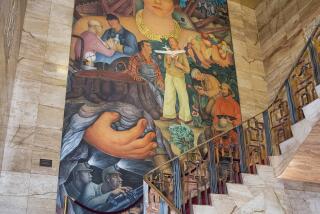Visit some of California’s historical landmarks
Washington, D.C., burst out in jubilant merrymaking when California was admitted to the Union on Sept. 9, 1850. Bands played, cannons fired, speeches filled the air and fireworks boomed in the sky.
It took more than a month for word to make its way to San Francisco and the West Coast that California had become the 31st state, but when it did, locals set off their own fireworks.
California has been setting them off ever since. The state’s star-spangled legacy includes within its borders hundreds of historically significant places, many of which remind us of our nation’s obligation to uphold individual rights and freedoms.
Most are on the National Register of Historical Places or on the list of California Historical Landmarks. Here’s a look at a few.
The first Spanish missionaries arrived in Alta (Upper) California in the 1700s, eventually founding a string of 21 religious outposts along a 650-mile trail called El Camino Real, from Mission San Diego de Alcalá, founded in 1769, to Sonoma’s San Francisco Solano, founded in 1823.
With the missionaries came Spanish soldiers who established forts — or presidios — in Monterey, San Diego, San Francisco, Santa Barbara and Sonoma, most of which would eventually be used as bases by U.S. forces.
Spain’s rule was tenuous; in 1821, Mexico won freedom after the decade-long Mexican War of Independence and became the ruler of Alta California.
Twenty-seven years later, it was the United States’ turn as the victor in the Mexican-American War. It won California, half of New Mexico, most of Arizona, Nevada, Utah and parts of Wyoming and Colorado in the Treaty of Guadalupe Hidalgo.
Monterey was frequently a prime player in this historic scenario. The city, which has done a good job of preserving its Old Town, was the site of the state’s first constitutional convention.
Delegates from 10 districts gathered in 1849 to debate and iron out a constitution. They ratified it in October, voted on it in November and sent it to Congress in January, setting the stage for our admission to the union a few months later.
Surprisingly, the delegates didn’t choose to make Monterey the capital. In rapid succession, San Jose, Vallejo and Benicia took turns, each proving too small a venue for the burgeoning government, and in 1854, Sacramento got the nod.
Visitors can check out the historic roots of the capital in Old Sacramento State Historic Park, which contains a cluster of early Gold Rush structures, the one-time home of the California Supreme Court and several buildings dating to the 1850s.
Old Sacramento, also a national historic landmark, has several claims to fame, including being the western end of the line for the Pony Express, the first transcontinental railroad and the transcontinental telegraph.
San Francisco offers another prime Americana site for history buffs. Its Presidio is now part of the Golden Gate National Recreation Area. Over a 200-year period, it was a military base for three nations, including the U.S. Today’s visitors can reflect in a national cemetery, explore a historic airfield, stroll through a verdant forest or walk along sandy beaches.
Downtown San Francisco has other sites to explore, including Union Square, at Geary and Powell streets, named in 1860 when public meetings were held here in support of the Union.
Visitors also can see the War Memorial Complex, birthplace of the United Nations. Fifty founding nations participated in drafting the U.N. Charter at the Civic Center complex in 1945 during a two-month international conference organized by President Franklin D. Roosevelt.
The conference took place in the Opera House, which in 1951 also was the site of the signing of the Treaty of San Francisco, officially ending World War II hostilities with Japan.
Two San Francisco Bay islands also have seen their share of national events. Treasure Island, which can be accessed only by traveling on the Bay Bridge, was constructed in 1936 as the site of the Golden Gate International Exposition.
The 1939-1940 exposition celebrated California and San Francisco as economic and cultural centers. The island became a geographically important U.S. naval station during World War II, eventually closing in the 1990s. Today it offers travelers a wonderful vantage point for photos of the bay and city skyline. Angel Island also offers historical significance, along with rustic charm, great photographic opportunities, trails to hike or bike and quiet hillsides ideal for a picnic.
The island was a U.S. immigration station from 1910 to 1940, processing hundreds of thousands of immigrants.
During World War I and II, thousands of troops were also processed here. The island became a California state park in the 1950s. Visitors can reach it by ferry.
Another historic attraction can be found in Alameda, near Oakland, where the USS Hornet has become a sea, air and space museum.
The one-time aircraft carrier was designated a national historic landmark for the critical battles in which it took part in the Pacific during WWII and because it was the recovery ship for Apollo 11 astronauts Neil Armstrong, Buzz Aldrin and Michael Collins after the first manned landing on the moon; it also picked up the crew of Apollo 12 several months later.
There’s not much left of another WWII vessel, the S.S. Emidio, but the small Crescent City monument that marks its existence is a reminder of how close to home the war came.
The Emidio, a tanker ship, became the first California casualty of the Japanese navy’s submarine force when it was attacked on Dec. 20, 1941. Five crew members were killed, and the ship broke up on the rocks off Crescent City.
Many of California’s historic spots celebrate distinguished events. Not so with Manzanar National Historic Site in the Owens Valley, which is a reminder of a painful period in our history.
During WWII, the U.S. government interned more than 110,000 Japanese Americans and resident Japanese aliens in military-style camps. Ten camps, including Manzanar, were set up in remote areas.
Today, visitors can learn about daily life in the camps by visiting the site six miles south of Independence.
You can also visit Manzanar’s website, where you can access photos from such noted photographers as Ansel Adams and Dorothea Lange. Both documented life in the centers during the relocation period. Their photos offer a telling lesson, especially when viewed on Independence Day.
More to Read
Sign up for The Wild
We’ll help you find the best places to hike, bike and run, as well as the perfect silent spots for meditation and yoga.
You may occasionally receive promotional content from the Los Angeles Times.






